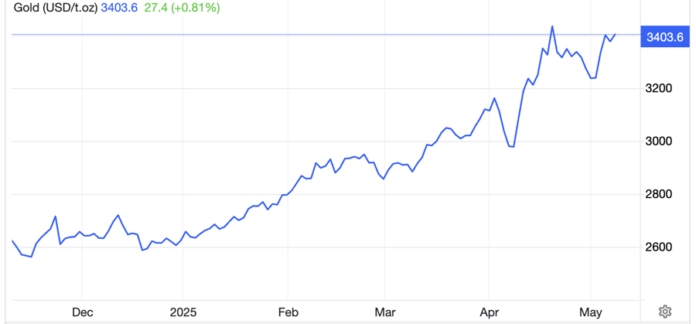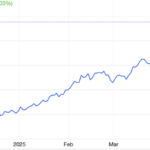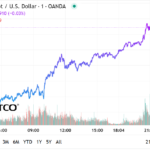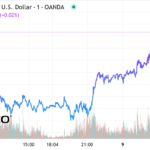Gold prices soared past the $3,400 per ounce mark this morning (May 8th), recovering spectacularly after plunging below this level in the previous night’s trading session in the US.
At almost 10 a.m. Vietnam time, the spot gold price in the Asian market surged by $40.1 per ounce compared to the New York closing price, equivalent to a nearly 1.2% increase, trading at $3,406.2 per ounce, according to data from the Kitco exchange. When converted using Vietcombank’s USD selling rate, this price is equivalent to nearly VND 107.3 million per tael, a VND 1.1 million increase compared to yesterday morning.
At the same time, Vietcombank’s website listed the USD buying and selling rates at VND 25,750 and VND 26,140, respectively, unchanged from the previous day.
On Wednesday (May 7th), spot gold closed at $3,366.1 per ounce in New York, a decrease of $68.4 per ounce or nearly 2% from the previous session’s close.
The sharp fluctuations, with swings of hundreds of dollars per ounce around the $3,400 mark, have been a notable feature of gold price movements in recent sessions. This reflects the fragile sentiment among global investors amid significant uncertainty surrounding US tariff policies.
Trade negotiations between the US and its trading partners are ongoing, but no concrete outcomes have been achieved yet. While the US and China have de-escalated tensions and will hold high-level trade talks in Geneva, Switzerland, this weekend, observers do not expect a deal to be reached soon.
In this context, the demand for gold as a risk hedge remains high, but gold prices tend to fall when positive news emerges. Additionally, rebounds in the US dollar can exert downward pressure on gold prices. Conversely, any signs of toughness or escalating trade tensions tend to fuel gold’s rally.
On Wednesday, the US Dollar Index, which measures the greenback’s strength against a basket of six major currencies, rose by 0.3%, closing at 99.85 points.
The Federal Reserve concluded its two-day monetary policy meeting on Tuesday and Wednesday by keeping the overnight lending rate unchanged at 4.25-4.5%, in line with market expectations. Both the Fed’s post-meeting statement and Chairman Jerome Powell’s remarks at a press conference indicated that the Fed would remain “on hold” until the impact of Trump administration policies on the economy becomes clearer.
The Fed’s wait-and-see stance could be detrimental to gold prices, as gold is a non-interest-bearing asset. Previously, rising expectations of a Fed rate cut in 2025 had positively influenced gold prices. Now, with those expectations diminishing, gold is receiving less support.
The market now believes that the Fed will not cut rates before July. Until recently, the market had bet on a June rate reduction.
Gold, a traditional safe-haven asset that investors flock to during times of geopolitical risks or economic uncertainty, has risen about 30% so far this year, following a 27% gain in 2024.
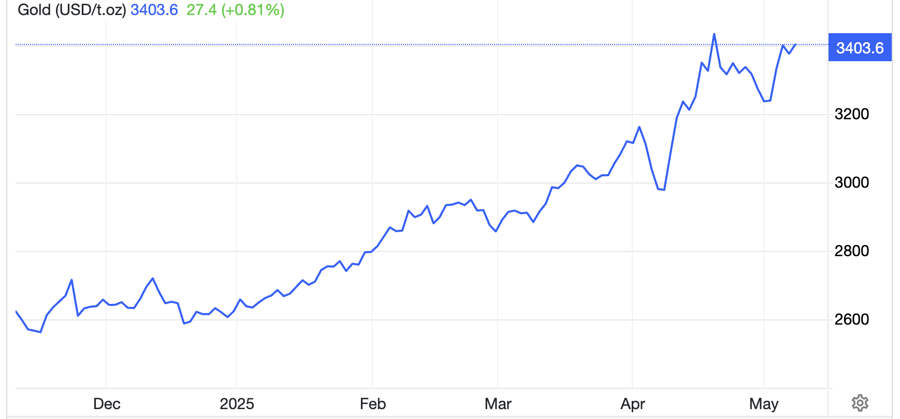
“We believe gold’s upside potential in the short term is limited, but in the latter half of the year, prices could climb higher, possibly reaching the $4,000 per ounce level,” stated a Bank of America report.
Official data from China revealed that the People’s Bank of China (PBOC) purchased a net amount of gold for the sixth consecutive month in April 2025, acquiring 70,000 ounces. The trend of central banks, particularly China, buying gold has been a crucial factor supporting gold prices in recent years.
Gold Prices Surge Amid Buying Frenzy from China on April 9th
Today, gold prices surged as investors sought safe-haven assets amid concerns over the US Treasury bond market. Notably, a report suggests that gold is also being bolstered by a wave of buying from China, driven by fears of renminbi depreciation.
The Art of the Central Bank’s Rate Cut: A Step-by-Step Guide from the Experts
“Mr. Tran Ngoc Bau predicts that the State Bank of Vietnam (SBV) will definitely cut interest rates, with the speed of the cut depending on the movement of foreign capital. This interest rate cut will apply to both the retail market and the interbank market, affecting loans and savings products for individuals and businesses alike.”

